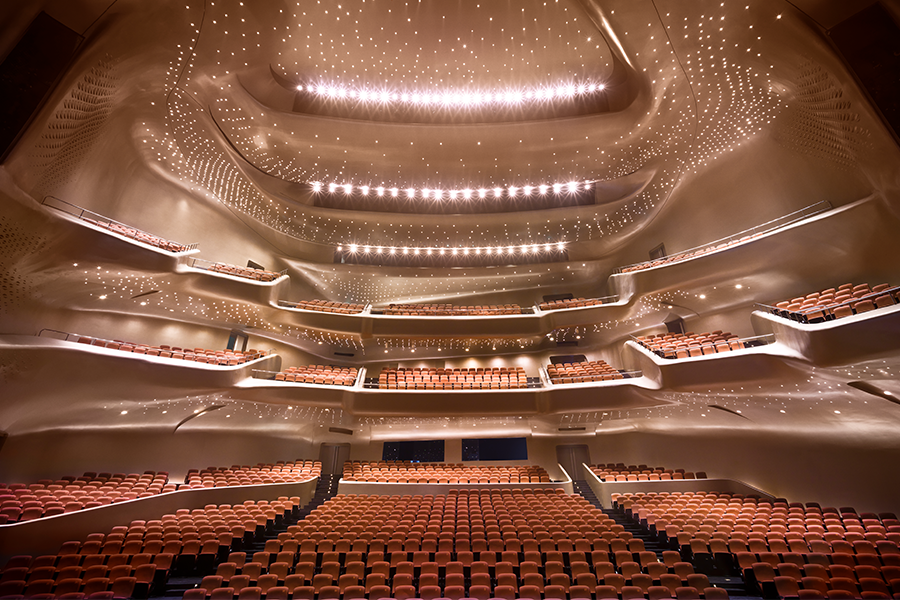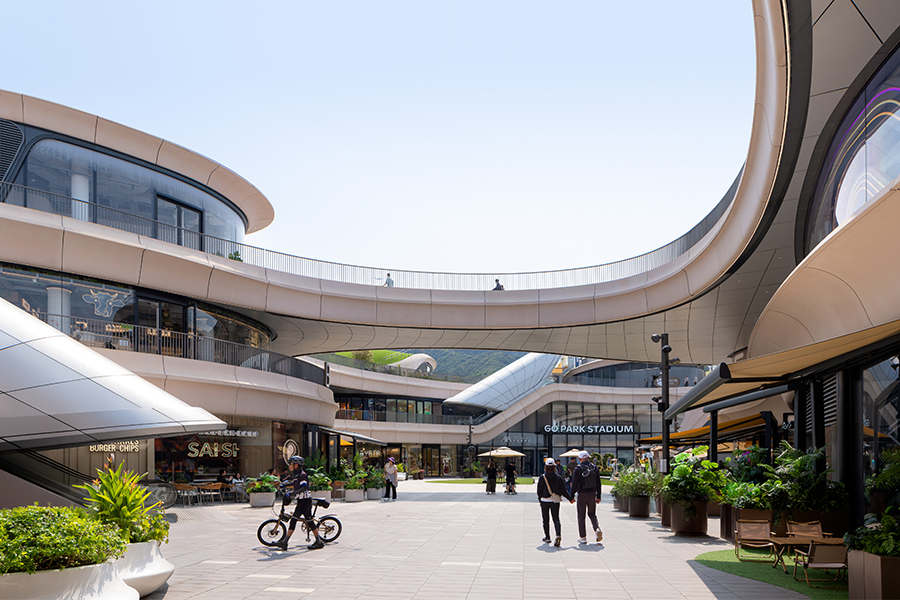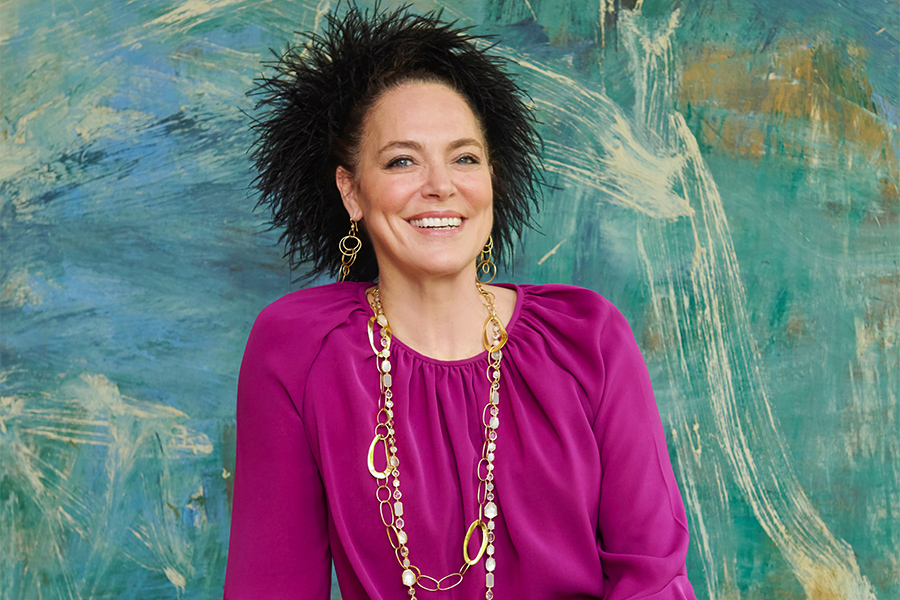Sometimes life gets in the way of the best laid plans. For Simon Yu, director and head of studio at Zaha Hadid Architects‘ Hong Kong office, a high-school field trip altered his career trajectory.
Born and raised in Scotland to Hong Kong Chinese parents, Yu joined a class trip to tour the Richard Rogers-designed Lloyd’s building in London. “It looked like a machine,” Yu recalls. “That was my first awareness that spaces could be designed to impact how people lived and worked.”

The International Gateway Centre in Hong Kong; rendering by Hayes Davidson
While at the Scott Sutherland School of Architecture & Built Environment in Aberdeen, Scotland, Yu stumbled upon Hadid’s work. “Her abstraction was a huge departure from the more technical Rogers—I was drawn to her understanding of spaces,” Yu says. “I worked for her initially as an intern, where I was the youngest of 12 or so people in 1995. Patrik Schumacher was already there, and he complemented her. She was incredibly intelligent, and she enjoyed exploring ideas with her younger staff members”
Yu returned to the studio in 2004, and for the past two decades he has been integral to the studio’s expansion. Indeed, after the firm won a commission to design the Guangzhou Opera House, Yu lived in China for six years before relocating to Hong Kong in 2012.
It was the right move as the Guangzhou Opera House capped the southern end of Tianhe, the provincial capital’s new civic and commercial axis. Its position perched aside the Pearl River opposite the Canton Tower inspired its twin boulder form, emerging along the banks as if smoothed by lapping waves over millennia.

Guangzhou Opera House in China
“While we were working on the opera house, Xin Zhang [cofounder of SOHO China, then mainland China’s largest developer] contacted us,” Yu says. “We met in Beijing and found that we spoke the same language—leading to us setting up a Beijing office.” Galaxy SOHO joined a handful of ZHA-designed structures for SOHO China across first-tier Chinese cities.
Today, Yu oversees approximately 20 staff members in Hong Kong and handles projects across the Asia-Pacific region; ZHA’s Beijing studio employs 35 people working primarily on mainland Chinese projects with an additional eight people in Shenzhen.
Yu’s most recently completed projects in Hong Kong include the Henderson corporate tower and the leisure complex GO Park for Sun Hung Kai Properties. Still to come is the International Gateway Centre, a multitower mixed-use development above the West Kowloon Terminus.
With the sudden passing of Hadid in 2016, Schumacher took the reins and the firm was converted to an employee benefit trust. “She instilled her spirit into us to continue creating and delivering projects as we did for her,” Yu says. “That spirit has not changed in the past decade.”

GO PARK Sai Sha in Hong Kong
As 90 percent of ZHA’s work is won through competitions, civic buildings continue to dominate its portfolio. While all the projects speak their own architectural vernacular, they follow the same methodology to ensure that public buildings are welcoming. “Initially, people were skeptical of Dongdaemun Design Plaza in Seoul,” Yu says. “Now, it is one of the most-visited public landscapes in the South Korean capital. The point is how porous it is: People can walk under and through it at any hour of the day. Before, the site was a baseball stadium—an underutilized urban black hole.”
Yu disputes the deconstructionist label often attached to Hadid: “Though her images were bare, she envisioned her buildings to be social creatures and people-oriented.” To that end, he continues her legacy by participating in events like FIND Global Summit 2025, part of Singapore Design Week, where he was a keynote speaker. “As I get older, it’s less about the eye candy and more about making things better for everyone. As architects, we can articulate our work to that benefit.”


